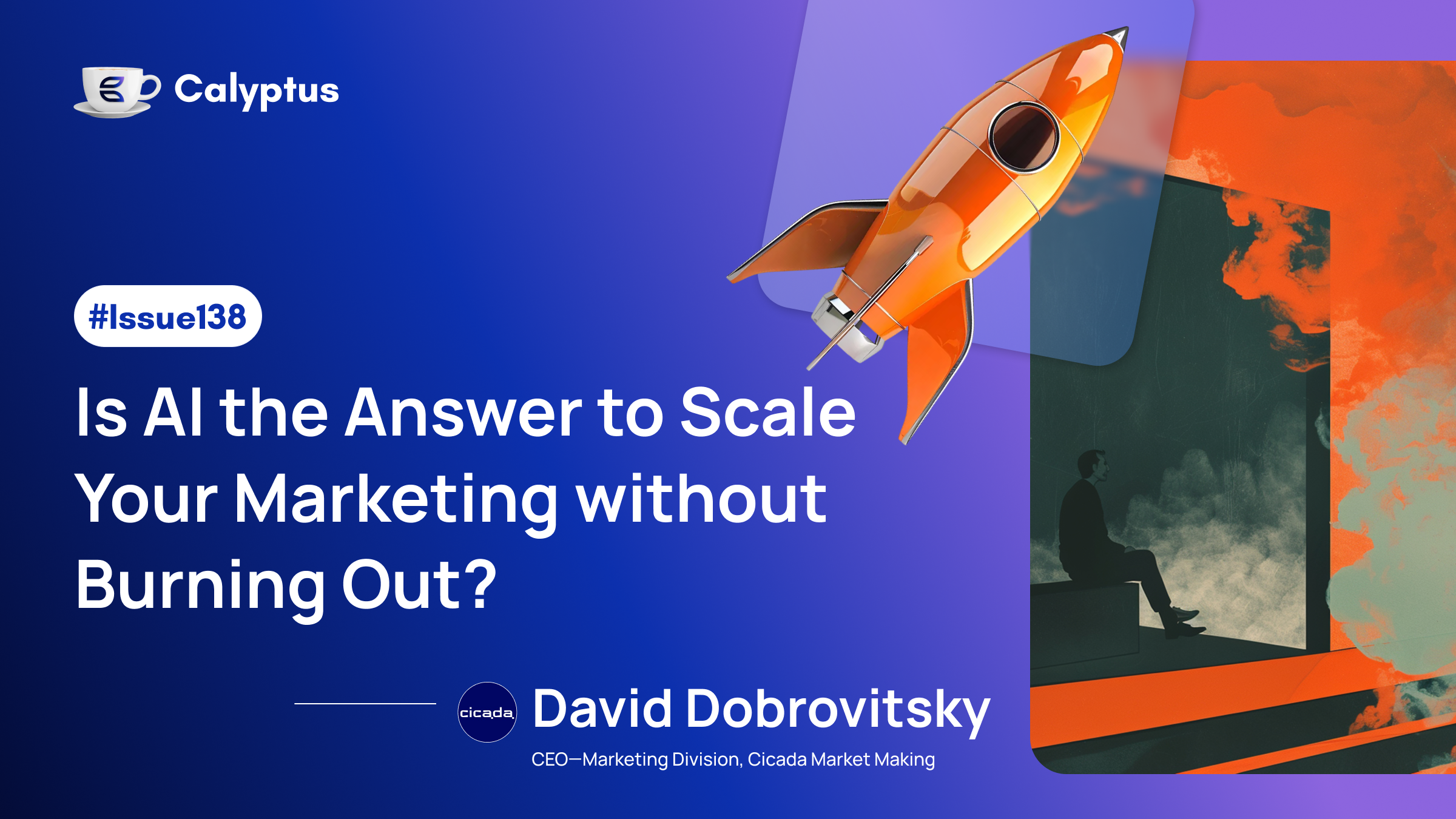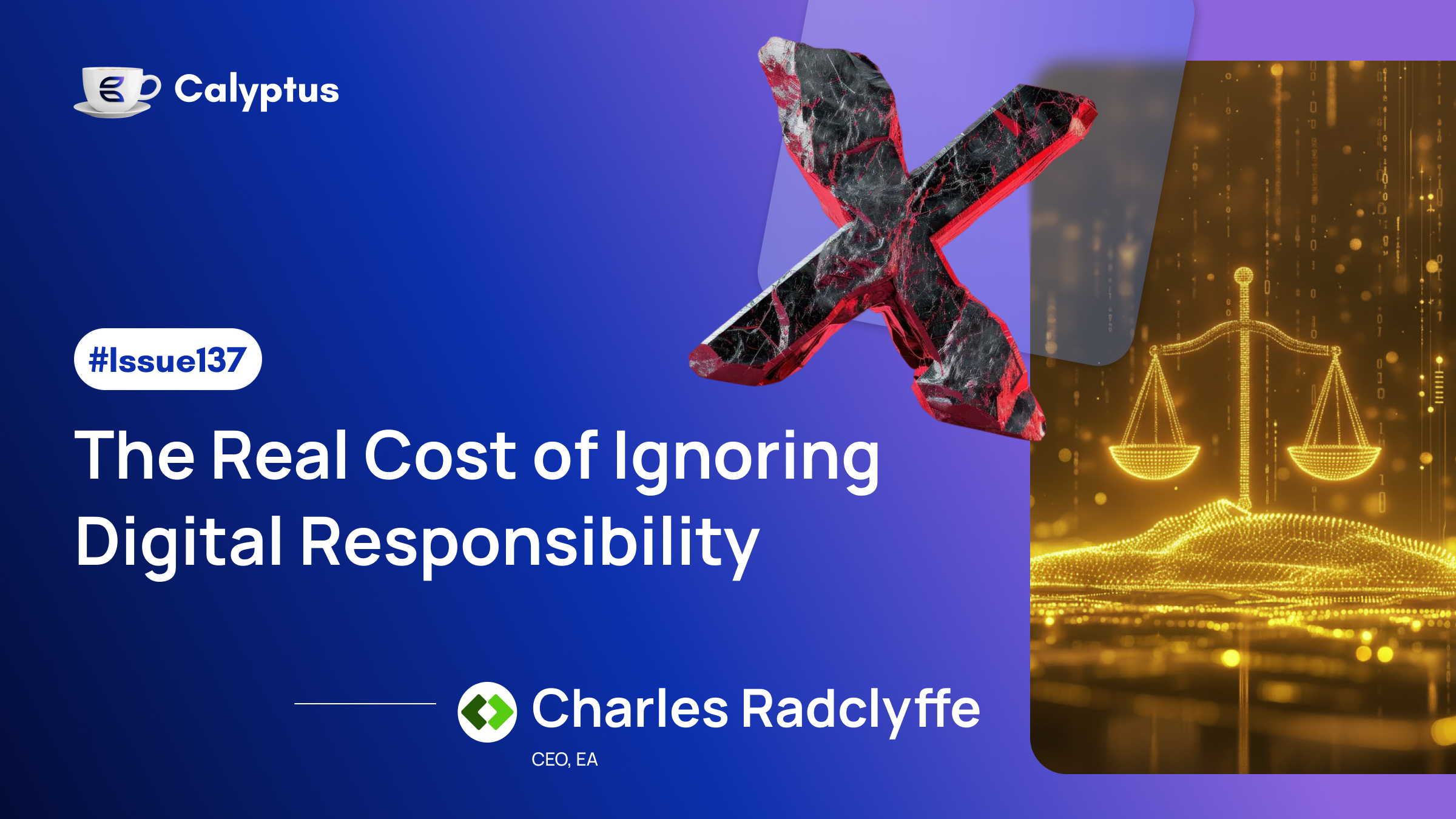Welcome to this edition of Coffee with Calyptus, where we chat with Justin Cheung, Senior Product Designer at Kraken, about the mindset and skillset shifts that come with designing for millions. From launching his own ventures to leading product design at one of the world’s largest crypto exchanges, Justin shares how storytelling, AI, and systems thinking shape his approach.

You went from launching your own ventures to shaping growth at Kraken. What mindset shifts did you have to make moving from founder to designing at scale for millions?
When you’re starting a business the ambiguity is extremely high, and wearing ten hats. So the mindset was to move as fast as possible to get market feedback, then iterate.
At Kraken, I had to shift from scrappy execution to shipping things at an extremely high bar, and finding overlooked opportunities that would create a big impact.
The mindset is focused less on finding PMF, and creating rituals around experimenting, shipping and measuring the impact.
“How will this hold up across millions of users?” and “What’s the operational cost of this decision?” The biggest shift was learning to slow down enough to systematize, not just ship fast, but ship sustainably.
What’s been the most unexpected lesson you’ve learned about designing for Web3 users versus traditional fintech?
The most surprising revelation in my journey from fintech to Web3 design has been the fundamental shift in what money means in each context.
While traditional fintech operates on familiar monetary concepts, Web3 demands we communicate entirely new relationships between tokens, networks, and decentralized systems.
This creates a unique paradox: the technology promising greater accessibility actually requires more educational scaffolding for users to navigate successfully.
What's become abundantly clear is that non-web3 users don't ultimately care about blockchain technology itself, they care about solving real problems efficiently.
At Kraken, we've seen how designing interfaces that feel familiar to traditional finance users while gradually introducing Web3 concepts has accelerated adoption.
The future belongs not to the most technically impressive protocols, but to applications that translate complex decentralized benefits into intuitive experiences addressing fundamental user needs: secure transactions, minimized costs, and trustworthy systems.
As app revenue now outpaces blockchain revenue for the first time, this user-first approach isn't just good design, it's quickly becoming the determining factor in Web3's mainstream success.
You’ve built a YouTube channel with over 1M views and run a content agency, has your background in storytelling and content affected the way you approach product design today?
My storytelling background influences my product design in two fundamental ways. First, it helps me craft cohesive user journeys that connect emotionally across all touchpoints. Second, it enables me to effectively communicate design decisions to teammates and stakeholders.
This skill has become increasingly valuable in the AI era. As automation handles more technical execution, our uniquely human ability to communicate value, persuade, and incorporate authentic lived experiences becomes our competitive advantage. While AI can generate content, it can't replicate the genuine human perspective that makes truly resonant products, and that's where my storytelling expertise gives me an edge in design.
AI is shaking up design and product at lightning speed. How are you using AI in your workflow today, and where do you think it’s adding the most value in product design?
AI is changing the way I think, far more than the way I execute. In my workflow today, the biggest value comes during the ideation and research synthesis phase. Whether I’m turning raw user insights into design directions or pressure-testing early ideas, I’m using AI as a thought partner, it helps clarify messy thinking and accelerate early-stage product strategy.
That said, when it comes to execution, especially within Figma, the impact has been more incremental. Figma hasn’t released transformative AI features yet, so day-to-day interface design still leans on traditional workflows.
But I do use small hacks, like screenshotting UIs and getting GPT to critique visual hierarchy or UX clarity. It’s fast, surprisingly helpful, and sometimes unlocks new angles.
Long term, I see AI enabling smaller, leaner teams. Designers who can think in systems and prototype using code or AI-native tools will become incredibly valuable. It’s less about replacement, and more about amplification.
Solidity Challenge 🕵️♂️
Would you be comfortable with such a loop in your contract?

Solidity Challenge Answer ✅
Answer: No, The populateLargeArray can run out of gas if length is too large.




